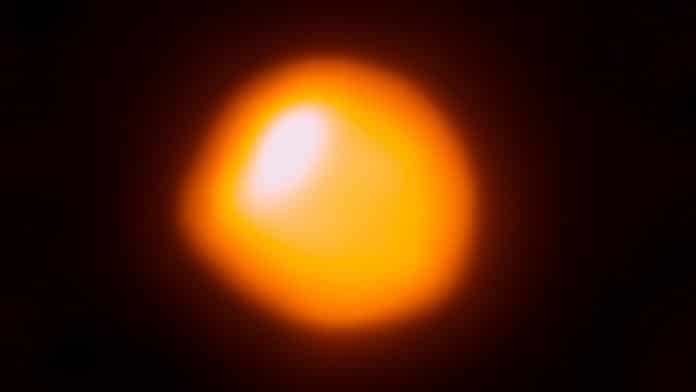The giant red star Betelgeuse which is part of the Orion constellation – has long fascinated scientists. But lately, it’s been behaving strangely.
Generally, one of the brightest stars in the sky, but it’s been observed that the star is losing two drops in the brightness since late 2019.
Scientists speculated that it could be about to explode.
A new study by an international team of scientists offers a further explanation. The research suggests that it may be another 100,000 years until the giant red star Betelgeuse dies in a fiery explosion.
The study, led by Dr. Meridith Joyce from The Australian National University (ANU), not only gives Betelgeuse a new lease on life but shows it is both smaller and closer to Earth than previously thought.
Dr. Joyce said, “We know the first dimming event involved a dust cloud. We found the second smaller event was likely due to the pulsations of the star.”
Using hydrodynamic and seismic modeling, scientists learned more about the physics driving these pulsations. They got a clearer idea of what phase of its life Betelgeuse is in.
According to co-author Dr. Shing-Chi Leung from The University of Tokyo, the analysis “confirmed that pressure waves – essentially, sound waves-were the cause of Betelgeuse’s pulsation.”
“It’s burning helium in its core at the moment, which means it’s nowhere near exploding,” Dr. Joyce said.
“We could be looking at around 100,000 years before an explosion happens.”
Co-author Dr. László Molnár from the Konkoly Observatory in Budapest says the study also revealed how big Betelgeuse is and its distance from Earth.
“The actual physical size of Betelgeuse has been a bit of a mystery – earlier studies suggested it could be bigger than the orbit of Jupiter. Our results say Betelgeuse only extends out to two-thirds of that, with a radius 750 times the radius of the sun,” Dr. Molnár said.
“Once we had the physical size of the star, we were able to determine the distance from Earth. Our results show it’s a mere 530 light-years from us – 25 percent closer than previously thought.”
Journal Reference:
- Meridith Joyce et al. Standing on the Shoulders of Giants: New Mass and Distance Estimates for Betelgeuse through Combined Evolutionary, Asteroseismic, and Hydrodynamic Simulations with MESA. DOI: 10.3847/1538-4357/abb8db
